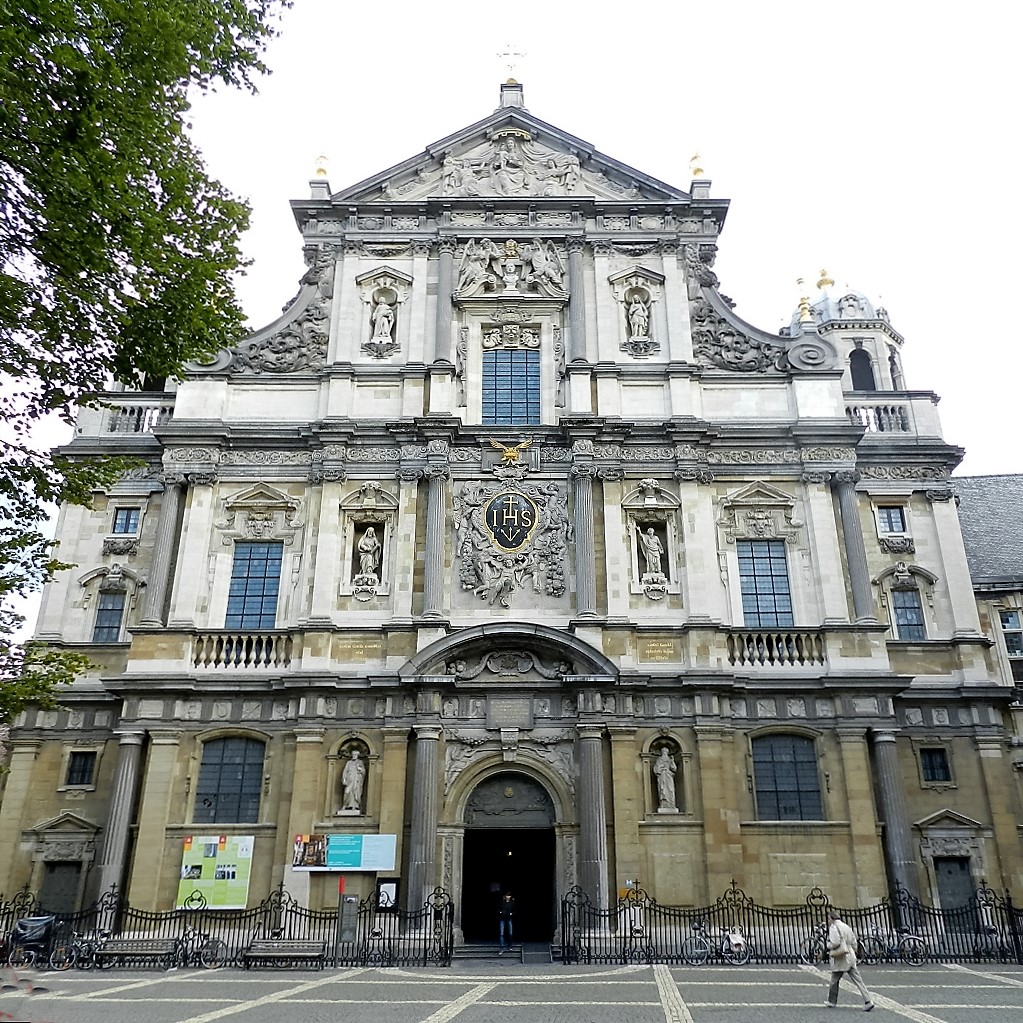The Antwerp jesuit church, a revelation.
The profess house
A centre of intellectual life
The fathers of the college were first of all preoccupied with teaching and education. Those of the profess house devoted themselves to spirituality, liturgy, hearing confessionThe sacrament of reconciliation. The believer [or penitent] confesses his / her shortcomings to a priest [the confessor] and expresses his / her regret. On behalf of God the priest grants forgiveness [absolution] and imposes a form of penance. This may include several prayers, an order to reconcile with the other party or, in the past, sometimes a pilgrimage., preaching and missionary work. In the literary field the Jesuits were extremely active in this centre of printing, which Antwerp was. Numerous works from their pens were published here. Some wrote poetry, such as Herman Hugo and Adriaan Poirters. FatherPriest who is a member of a religious order. Andreas Schott was an outstanding philologist. Also historical works were published, thanks to Carolus Scribani and, what Antwerp is concerned, Daniël Papebrochus, which is the Latinized form of ‘van Papenbroeck’. In humanistic circles Latin was just in! Spiritual literature was really abundant. The handbook of Mary congregations was by the pen of the great controversy preacherA priest, deacon or lay person who explains the Bible readings during the celebration of Mass. Sometimes a preacher also acts outside of Mass celebrations (and in the past he did so regularly) to clarify certain points of faith and to encourage the churchgoers to a more Christian way of life. Franciscus Costerus (Frans de Coster).
Because intellectual Catholics find it hard to come to terms with legends about saints and because protestant Christians are opposed to devoting to saints anyhow, the Jesuits study the lives of saints using correct historical methods. The first one to do so was Heribert Rosweyde, followed by Johannes Bollandus, who turned the Antwerp profess house into a real study centre of hagiographers, who were called ‘Bollandists’ after him. Some fifty volumes of their world famous Acta Sanctorum or The facts about saints saw the light of day here. Important collaborators were Godefridus Henschenius and Papebrochus.

There were also artists among the Jesuits: architects François d’Aguilon and Peter Huyssens, the famous painter of flowers Daniël Seghers (Antwerp, 1590-1661) and Melchior Hamers, who had trained himself in sculpture. The fame of Seghers, who lived as a lay brotherA male religious who is not a priest. in the profess house from 1627 onwards, reached far beyond the country borders. Joost Van den Vondel (the famous Dutch poet) wrote a poem in his honour:
De geest van Seghers is een bij | The spirit of Seghers is a bee |
In Antwerp the Jesuits were also known for their charitable efforts among prisoners, poor, ill and dying people, as well at home as in hospitals. For visiting the poor and ill they were assisted by members of the Mary congregations and by their spiritual daughters. During epidemics of plague the Jesuits are particularly devoted at nursing ill people, which is mentioned as “assistunt pestiferis” in the lists of the members of the house. Several ‘companions of Jesus’ succumbed; after all “No disciple is above his teacher” (Mt. 10:24)
In order to obtain a sound balance between effort and recreation each Jesuit residence had a country house of their own at their disposal. The country estate the profess house had in Berchem was left in 1618 for Hof ter Rivieren in Deurne, which was situated more favourably, whereas the fathers of the college could acquire castle Vennenburg nearby. It was also called Goed ter Heyden and later it became known as Jezuïetenhof [Jesuit Court). And because the Jesuits from Lier owned Sterckxhof, right next to this, it can be said that what used to be owned by Jesuits then, now is the biggest green lung of Antwerp.
The boarding building (which was also called ‘convict’) was moved to Prinsstraat in 1630 and in 1651 it was moved once again to a third patrician premises, Hotel van Stralen in Korte Sint-Annastraat. In the middle of the 17th century 150 boarders lived there. Most of them were from wealthy families, as well from the surroundings as from abroad.
In 1638 the fathers of the ‘convict’ rented the country estate Crayenhof in Burcht for the recreation of their pupils. Because the presence of Northern troops caused insecurity, the Jesuits’ eyes soon fell on Bisschoppenhof (Bishop’s Court) of BishopPriest in charge of a diocese. See also ‘archbishop’. Malderus at Kiel (south of Antwerp), which they recreated into a garden of delight with trees, hedges and shrubs, ponds and playgrounds. Because its new Our Lady’s Chapel
A small church that is not a parish church. It may be part of a larger entity such as a hospital, school, or an alms-house, or it may stand alone.
An enclosed part of a church with its own altar.
was also used as a church for the 4,000 inhabitants of Kiel and Beerschot, the estate has been known as Mariënborgh ever since.

